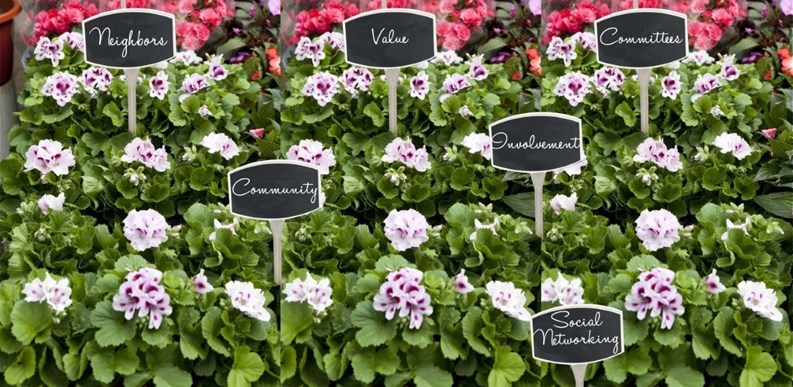The ethos of a homeowners association—to be open and welcoming—furthers the collective strength of a community. Therefore, it’s incumbent on trustees, board members and managers to foster a stronger, more cohesive sense of community. This is often achieved by holding social functions in addition to regular meetings, such as sponsoring activities outside the building or encouraging involvement with disparate activities, be it bingo night or summer picnics.
“We find that the communities that have active social committees and people who are truly committed to bringing residents together as neighbors and not just ‘people that live in the same property’ are that ones that can make building a sense of community successful,” said Justin Gargiulo, senior vice president and director of corporate operations for Great North Property Management, with offices in New Hampshire and Massachusetts.
Gargiulo says the key to success is having people on the board, or in the community, who are proactive and have great, inclusive ideas that motivate people to get out of their units. “Things like annual barbeques, movie nights, game nights, pot luck dinners are all things we have seen at the communities we’re involved with,” he said. “It’s really nice when you see a property transition from an association to a community where people interact and really care about each other.”
All Good Things in All Good Times
Boards and managers who seek to develop a more “active” community, complete with interactive events, have to be patient, says Gargiulo. “Although it takes time, it can be done and we encourage our boards to allow the social element to flourish.” Deborah Jones, PCAM and vice president at the Boston-based The Dartmouth Group, agrees adding that it is often helpful to remember that a level playing field allows for the most participation.
“The root of community is ‘common.’ Besides sharing the common property, sharing common information through ‘communication,’ which also has the root word ‘common,’ is one of the biggest builders of a community,” says Jones.
As with all aspects of community, things change. In many communities, residents who have lived on the grounds for years, or decades, may have once enjoyed tennis and swimming, but now prefer different activities, such as movie nights or guest lectures.
Infrastructure plays a large role in the success of community programs, explains David J. Levy, owner of Sterling Services in Holliston, Massachusetts, a real estate and property management firm. “Properties with clubhouses tend to automatically have a stronger sense of community due to the developer creating a facility that facilitates that community,” he says. “With or without a clubhouse, the key to increasing the sense of community is increasing communication.”
For those properties without a clubhouse, Levy suggests planning annual social events, such as a summer cookout. “We have two towns were we combine clients, by town, holding very large events. We have contractors and suppliers contribute around half of the cost of these events, such that we can have tents, catered food, jumpy gyms, dunk tanks, an ice cream truck and other fun features.”
This past summer, the largest summer event Levy oversaw had a budget of $10,000 and included a live band. The summer; however, is not the only festive season. “A holiday party is typically only practical for a community with a clubhouse. Yet for the clients, generally the more affluent properties, their holiday socials are a huge hit.”
Bringing the Community Together
While demographics continually change at all communities, technology has allowed for more communication, which has in turn increased the participation in certain activities. “Technology has helped the availability of sharing information, as well as helping to promote transparency of operation,” says Jones. “Online notifications and websites can help owners feel connected even when they are away from the property, such as snowbirds.”
While seemingly everyone is Facebooking, emailing or texting, a community with a mix of demographics needs to deploy some “old fashioned” modes of communication. “As a company, we recognize that not everyone uses email and the internet, so we rely heavily on the phone and face-to-face contact,” says Gargiulo. “Having that one-on-one personal contact with our residents is very important and something our managers understand completely.”
Levy agrees with Gargiulo, but adds that social media is the “mega-trend” created by the newer residents in their desire to leverage technology. “E-mail blasts and web-sites, with a web-portal for more detailed information, once considered a luxury are now the ‘entry fee’ to manage the properties going out to bid for a new managing agent,” Levy says.
The most successful communities, notes Gargiulo, are those that offer variety. “The important thing for a social committee to remember is to try to offer varying events over the course of the year so you can spark the interest of as many people in the community as possible,” he continues. “If someone enjoys a community-sponsored event the first time, chances are they’ll give the next few a try. This leads to better relationships between owners, which is the foundation of building that sense of community.”
One of the benefits of living in a homeowners association is the cultural diversity of members. To ensure there are no language barriers and that all residents are informed and feel welcome and included, boards and managers have to make sure they are sensitive to the changing needs of the collective.
“We are very sensitive to culture differences, especially food desires,” says Levy. “On notification, we have office and maintenance staff with strong Latin language skills, such as Spanish and Portuguese, such that we send out written invitations in multiple languages.” Massachusetts, Levy notes, is the only state where Portuguese, not Spanish, is the number-two language.
In recent years, Jones has seen an increase in the popularity of book clubs, progressive dinners, and card games. This increase is especially prominent in communities that are designed for older residents who are often do a good job of organizing social group events, partly due to the shared age range. There are also other aspects of community living that might not be as “festive,” but speaks to the importance of being good neighbors.
“In one of my communities with an older population, there are some folks that really focus on assisting each other in such items as organizing dog walking for a sick unit owner and helping to coordinate rides to medical appointments,” said Levy.
The Role of a Activities/
Community Director
Depending on the size of the association, Levy says having one person solely in charge of the social activities calendar is a rare occurrence. The majority of the time, it is a shared responsibility. “Unless this is a massive community, there are no Activities or Community Directors. This is just another task for the portfolio manager and volunteer board members to add to their busy plate,” he says.
In Gargiulo’s experience, a community will have one to three people on a “social committee” who together develop ideas about events. These suggestions are brought to the board for approval. “The board discusses and decides if it’s something they want to proceed with funding, and at that point the committee implements,” he says.
Whether or not a community has a dedicated person or committee in place for activities, the way in which ideas are implemented can positively change the residents’ interpretation of their community.
“I wouldn’t say we have any communities that do anything unusual other than a few that raffle off one month of free condominium fees. We have one community that has a holiday party for the children in the community; they also have an annual BBQ for all of the residents and they do not charge for any of the events, which is nice and helps to increase the turnout,” says Gargiulo. “The board also sets up games and a pie-eating contest with prizes. Another community has a social hour with cocktails at the gazebo every other week in the summer and on occasion they also do a BBQ.”
While a community director has time to develop unique ideas to “wow” residents, for most communities the ability to tap into local networking, with an understanding of all residents’ needs, is often a recipe for a successful social gathering.
“In the town were we have eight accounts and 1,000-plus homes, we have a band, an ice cream truck, and even someone doing magic tricks. We have the event catered, with some sensitivity to the food requirements of cultures which are vegetarians,” said Levy. “In that town, we also have the Eye Mobile from the Lions Club, which provides free eye exams, as well as blood pressure testing.”
When it comes down to it, residents are looking to enjoy a few hours with family and friends, and perhaps brainstorm about ways and methods to improve, or enhance, the “community” they call home. In the final analysis, when approaching activity planning, Levy said there is a simple rule that almost always results in a good time for all: “Nothing beats free food and events for the kids.”
W.B. King is a freelance writer and a frequent contributor to New England Condominium.







Leave a Comment